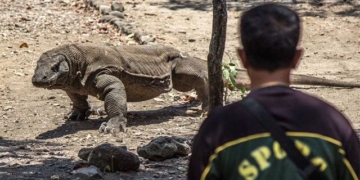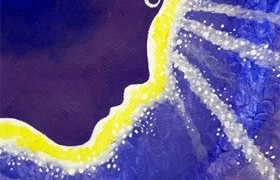The Ewenki people cannot live without reindeer. Clothing, shoes, hats, and leather cushions in Cuoluozi, where they reside, are all made from reindeer hide.
Photographer Wang Wei focused his lens on the Ewenki people living deep in the dense forests of the Greater Khingan Mountains. He spent nearly three years documenting the last reindeer tribe in China, introducing the public to a series of photos and videos capturing the life of the Ewenki and their threatened culture.
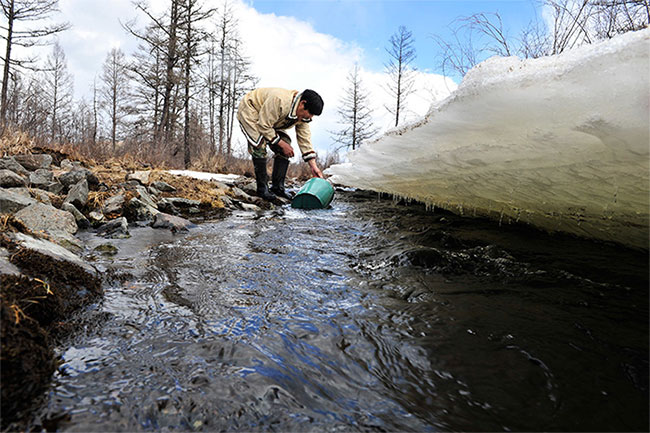
Dawa fetching water near a settlement in the Khingan Mountains. In May, when the ice has not yet melted, the Deer Ewenki often migrate to areas with abundant moss.
The term Ewenki means “people who live in the mountainous forests” in their ethnic language. There are three main branches of the Ewenki in China: Suolun, Tunguska, and Reindeer Ewenki. Another unclear explanation suggests that Ewenki means people living on the southern slopes of the mountains. Both interpretations indicate that the Ewenki live in the forest. Over time, some branches have moved away from the mountains to the grasslands and valleys.
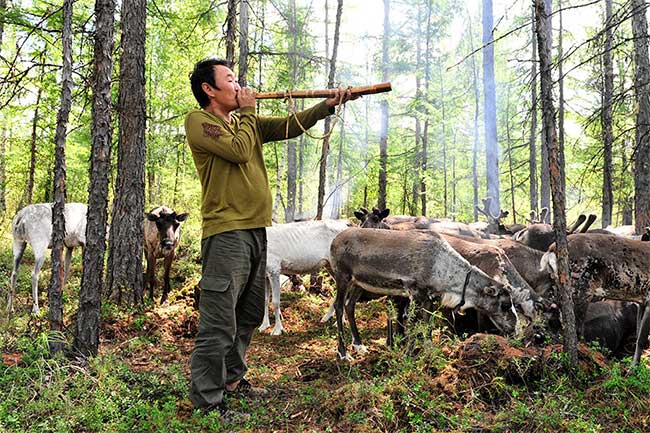
Hunter Suobin using a reindeer “whistle” to call wild reindeer in the interior of the Khingan Mountains. This is the last remaining reindeer whistle from this set.
Dubbed the “last hunting tribe,” the Reindeer Ewenki tribe lives in the Aoluguya Ewenki Ethnic Town, located in Genhe City, Inner Mongolia Autonomous Region, and is the only ethnic group in China that herds reindeer and preserves reindeer culture.
However, with the advancement of modern civilization, the cultural elements of the Ewenki people are being profoundly affected. Today, only about 30 individuals represent the last generation of Reindeer Ewenki, with a very small number still maintaining a relatively primitive and natural lifestyle. They are an important part of the Pan-Arctic Circle culture.
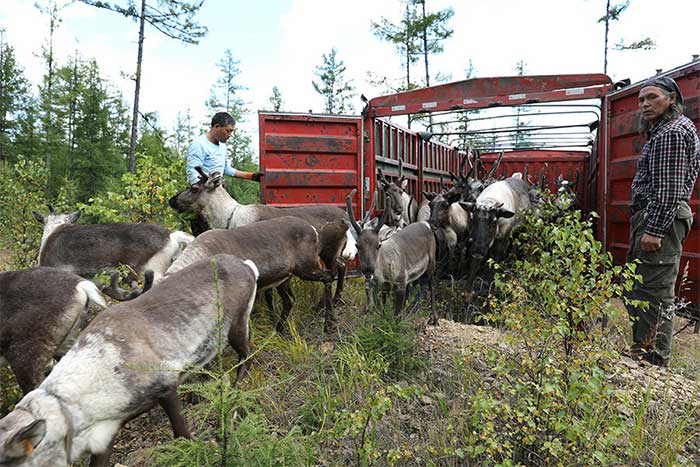
Gegejun moving his reindeer to the interior. The Deer Ewenki have lived in deep mountains and dense forests. Their lifestyle is semi-nomadic – without a fixed residence.
According to historical records, the ancestors of the Deer Ewenki lived in the highlands upstream of the Nercha River, northeast of Lake Baikal around 2000 BC. By the 18th century, this branch of the Deer Ewenki had migrated along the Shilka River to the Greater Khingan Mountains on the right bank of the Ergun River.
The Greater Khingan Mountains are located in the northeastern part of the Inner Mongolia Autonomous Region. Winters here are long and frigid, with temperatures dropping as low as -50 degrees Celsius.
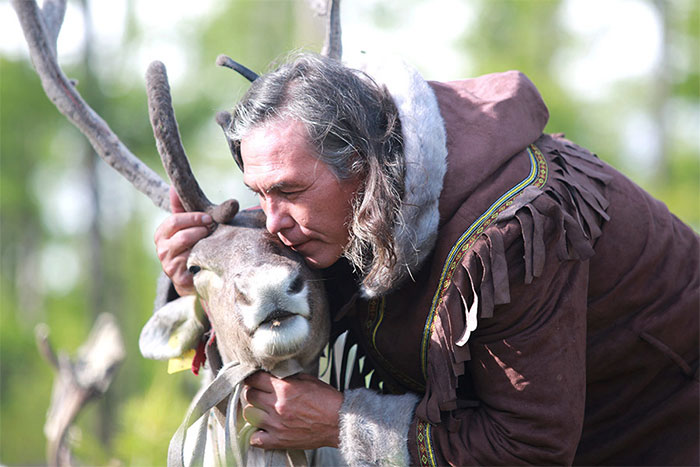
Gugejun – a hunter petting a reindeer. Reindeer grazing in the mountains often face threats from bears, lynxes, and poachers. These dangers significantly impact the reproductive issues of the reindeer.
The terrain features high mountains and dense forests, providing rich natural resources. In such a harsh natural environment, the Ewenki rely on livestock herding.
Reindeer herding and traditional hunting have ensured their subsistence living in the mountainous forests. They consume animal meat, wear animal hide clothing, and live in dense forests in traditional Cuoluozi cone-shaped houses, which are characteristic of their unique lifestyle and culture.
The Ewenki cannot live without reindeer. Clothing, shoes, hats, and leather cushions in Cuoluozi, where they live, are all made from reindeer hide. They grow up with nutritious reindeer milk. Their main food consists of dried meat and reindeer milk served with bread.
Liuxia, a hunter, feeds the reindeer in the interior of the Khingan Mountains with salt. Salt is necessary for the reindeer to supplement sodium to maintain blood pressure.
However, modern society has profoundly impacted the development of the Reindeer Ewenki. The last elder of the Ewenki tribe, Maria Suo, once said: “As long as there are tribal elders and reindeer in the forests of the Khingan Mountains, there will be a ancient reindeer civilization.”
Today, the younger generation of the Reindeer Ewenki has chosen a modern lifestyle in the lowlands. They are gradually forgetting their ethnic language and traditional culture. The reindeer culture, hunting culture, and shamanic culture that have been passed down for thousands of years are slowly fading away.
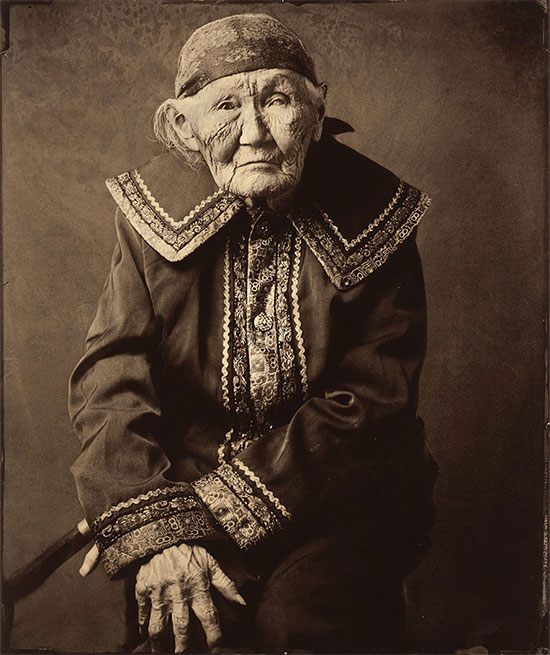
Mrs. Maria Suo, born in 1921, guides her people on how to raise the rare remaining reindeer in China. She is the most representative figure in the tribe.
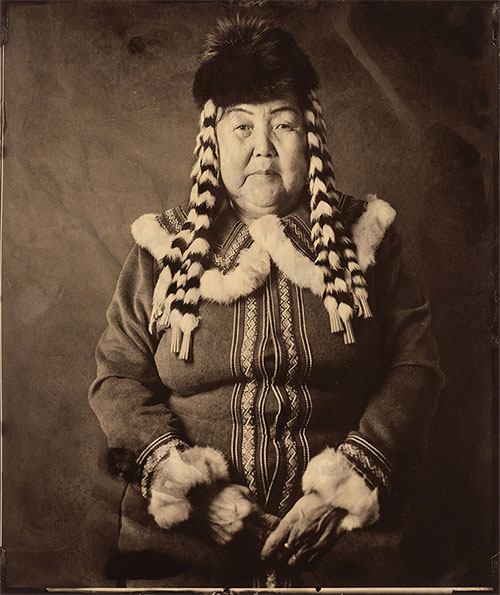
Mrs. Mani, born in 1950, was elected Vice Chairman of the Aoluguya Ewenki Ethnic Town. She is one of the few female officials of the Ewenki ethnic group.
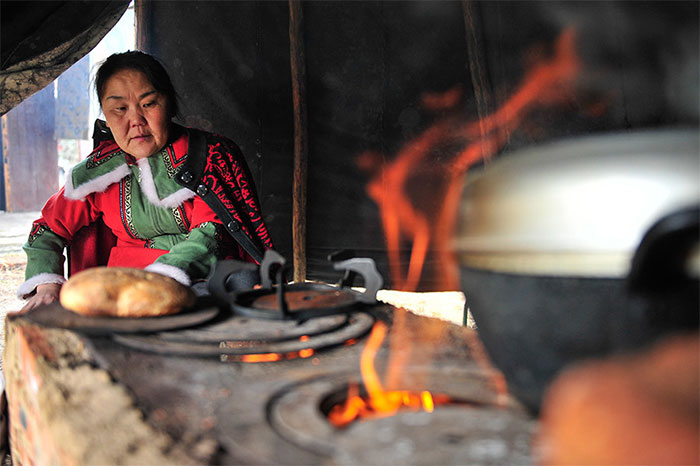
Suoyulan making bread in the Aoluguya Ewenki settlement. Bread, made from flour and reindeer milk, is the traditional food of the Ewenki people.
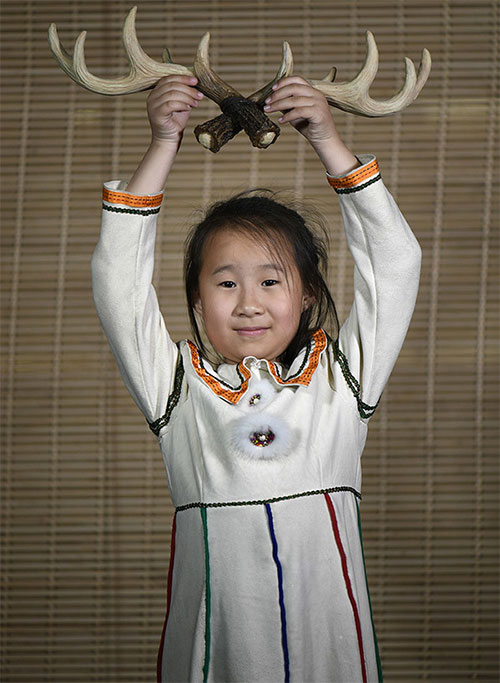
The daughter of hunter Suoyun showing off a pair of reindeer antlers. Mature male reindeer often develop scratches at the end of summer when the velvet covering is shedding from their antlers.



















































